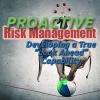Business Transformation Requires Transformational Leaders
Leadership and teaming skills are front and center in times of rapid change. Meet today’s constant disruption head on with expert guidance in leadership, business strategy, transformation, and innovation. Whether the disruption du jour is a digitally-driven upending of traditional business models, the pandemic-driven end to business as usual, or the change-driven challenge of staffing that meets your transformation plans — you’ll be prepared with cutting edge techniques and expert knowledge that enable strategic leadership.
Subscribe to Arthur D. Little's Culture & Leadership Newsletter
Insight
In a recent webinar, Cutter Senior Consultant Rodolfo Guzmán and Daniel Monzón offered insight into what O&G companies need to focus on for the best chance to weather the COVID-19 storm. They also answered questions from participants about digital strategies and technologies that will support such transformations in their organizations.
A big cause of failure for large organizations is the attempt to apply one of the many off-the-shelf Agile models. These typically work well for small companies, but not so much in large corporate settings. In Part I of this two-part Advisor, we explore the first half of a four-part framework to scale and customize a tailored Agile approach that caters to an organization’s specific requirements, beginning with assessing your needs in the understand phase. We then describe how picking building blocks from the many Agile concepts available will shape a working model according to the needs of your enterprise.
Robin F. Goldsmith discusses the application of proactive risk management techniques in software testing and development. He observes that many of the risks encountered in software are largely predictable and explores why businesses still manage to fall foul of them and how the real processes employed in our organizations can differ starkly from how we presume them to be. Goldsmith goes on to discuss how a more proactive approach to risk identification at the early stages of a project often saves time and money later.
The edition of The Cutter Edge explores how agile budgeting can create value as a revenue stream generator, why communication is so essential in a digital shift, how to improve software system design, and more.
The team is the fundamental unit of organizational work, not the individual. But the ways we manage our teams — and thus our talent — often set us up for systemic gaps and increasing challenges (versus continuous improvement) over time. Today’s executives face two ongoing complex problems: business strategy and people leadership. The invisible nature of these talent issues makes solving them a strategic need through HR capacity building over time.
The COVID-19 pandemic has posed unprecedented challenges to businesses across all sectors and throughout the world. Risk management systems and contingency measures have been put to the test, and as is so often seen in moments of crisis, many have been found wanting. The result? A real need now exists to determine what is meant by business resilience and how to apply it to organizations’ different operating models.
Cutter Consortium Senior Consultant Barry M. O’Reilly introduces the concept of residuality theory and its application to the complex relationships that exist between different risks in the modern business environment. Expanding on the issues of complexity versus complication in the world of enterprise software, O’Reilly shows how the principle of residuality enables organizations to anticipate the impact of chains of interconnected risks.
Noah Barsky explores some key shifts in mindset that effective risk management will require, such as making risk management the responsibility of all, avoiding silos, looking at issues that are important but not urgent, and building a culture that can ask, “Why?” Barsky focuses on the need to not only connect the dots between different risk areas, but also between risk management and other corporate planning and monitoring activities.




















